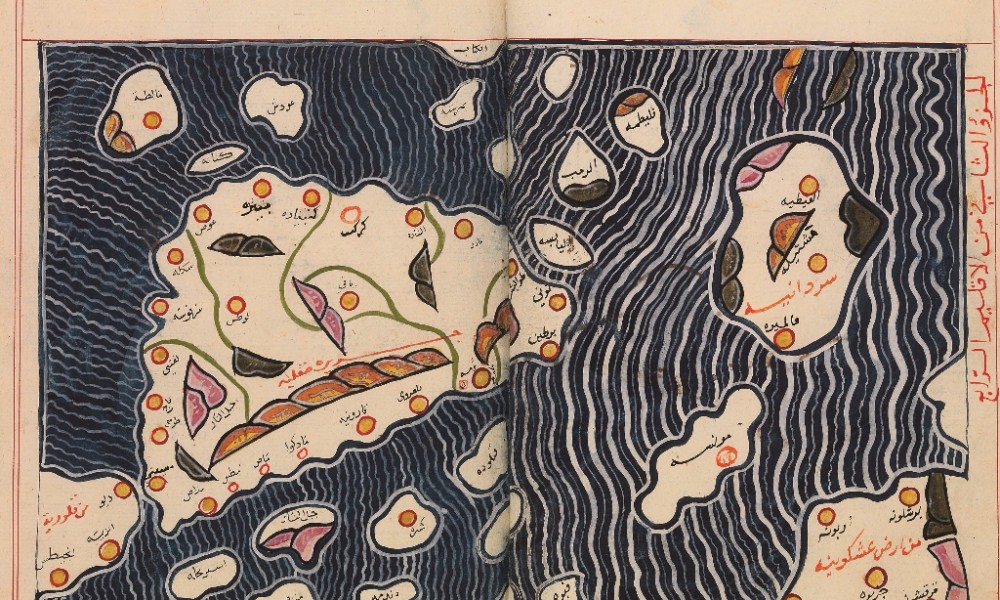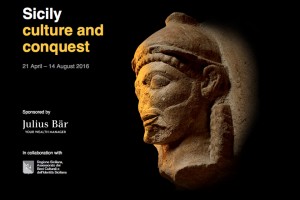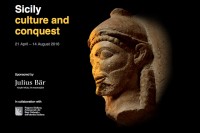Sicily: Culture and Conquest at the British Museum

The Italian island of Sicily might seem a strange subject for a large exhibition at the British Museum. However, on stepping into the show the wealth of cultural production from the island immediately becomes clear. As the display proves, Sicily was a centre of agriculture, architecture, trade and art, from the cave markings of its earliest indigenous people to the sophisticated early oil paintings of the Renaissance artist Antonio da Messina.
The works on display are dynamic and engaging, and are actively used by the curators to tell the story of Sicily and its development. There is a tombstone from 2000 BC with a semi-abstract swirling design that perhaps represents the sacred nature of the sexual act. Elsewhere, the influence of the Greeks is shown through the usual potsherds and architectural fragments but also through a gurning gorgon and cheeky statuettes of Eros and Aphrodite.
The invasion of Sicily by the Romans is marked by a bronze “rostrum”, or battering ram, a beautifully ornate piece, from one of the ships that actually fought in the battle that secured the Roman victory: this is evidence of history as it was made and really makes the narrative come alive.
Much of the exhibition is devoted to the Norman conquest of Sicily, which took place around the same time as the Norman invasion of England in the 1060s, though Roger II adopted a policy of multiculturalism that soon entered into everyday life on the island; a fact attested to by a beautiful early 12th century tombstone on which the inscription is written in four languages, each representing a respective religion, suggesting an unexpected degree of tolerance and understanding.
Of course, not everything was perfect, and the curators are keen not to offer a rose-tinted view of the period. They tell us that, although the age of the early Norman invaders was characterised by “tolerance and coexistence”, there was very little “integration or equality” of cultures.
The exhibition gives a compelling insight into the little-known but exciting early history of the island through a combination of succinct texts and the dynamic presentation of objects. The narrative is unique to Sicily, but it also offers a fascinating counterpart to the multiculturalism and border-crossing that are so often documented in our own society: perhaps there is even something to learn here.
Anna Souter
Sicily: Culture and Conquest is at the British Museum from 21st April until 14th August 2016, for further information visit here.



























Facebook
Twitter
Instagram
YouTube
RSS